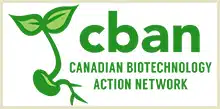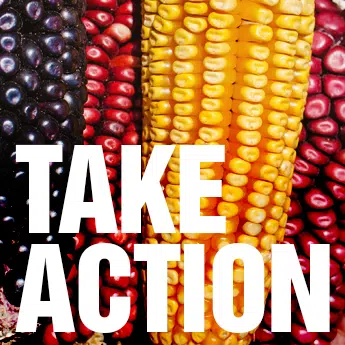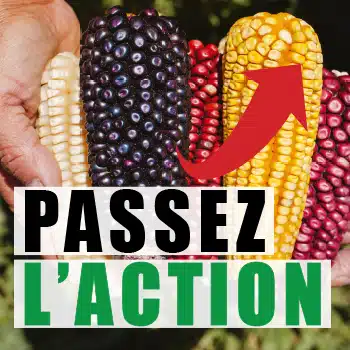No environmental risk assessment, and reduced environmental stewardship requirements for new Monsanto/Dow “SmartStax”
Ottawa, Friday, July 24, 2009. Farmer and environmental groups in the Canadian Biotechnology Action Network (CBAN) are warning of several dangerous consequences of Canada’s approval of Monsanto and Dow’s new eight-trait “SmartStax” genetically engineered (GE, also called genetic modification or GM) corn, indicating a further weakening of regulations of environmental risk.
The newly approved GE corn is unique in that it stacks eight different GE traits – for herbicide-tolerance (Roundup and glufosinate) and insect-resistance (Bt) – together, traits that have already been individually approved and are available on the market. The new GE corn was developed through a research agreement between Monsanto and Dow AgroSciences.
Normally, the Canadian Food Inspection Agency (CFIA) publishes ‘Decision Documents’ that summarize approval decisions, but there is no such summary of the decision to approve ‘SmartStax’. “You’d think that a combination of eight GE traits would trigger an environmental assessment but the CFIA has no public record of their evaluation. This seems to confirm that the corn by-passed existing scientific assessment processes that have already been judged insufficient by the 2001 Royal Society of Canada Panel,” said Lucy Sharratt, Coordinator of Canadian Biotechnology Action Network. The CFIA failed to explain their decision not to require environmental risk assessments for ‘SmartStax’.
The CFIA also failed to provide a rationale for their decision to reduce environmental stewardship requirements. In approving this corn, the CFIA substantially reduced the actions that farmers are required to take towards the goal of delaying the evolution of insect resistance to pesticides like Bt. (1) The CFIA has reduced the refuge area requirements from 20% to 5% for growing ‘SmartStax’ corn. Farmers who grow GE insect resistant (Bt) corn are required to set aside a 20% refuge area within one-quarter mile of any Bt field. The refuge is an area planted with non-Bt corn in order to delay the evolution of insect resistance to Bt. “Not only has CFIA failed to evaluate the environmental risks of this eight-trait GE corn, it has also dramatically reduced one of its only environmental requirements in the field,” said Sharratt.
“Insect resistance is inevitable, it’s just a matter of time and the reduction of refuge for this new GE corn will simply speed this evolution,” said Éric Darier, an Agriculture campaigner for Greenpeace Canada.
The CFIA has stated that it will review its decision to cut the refuge area in 2013 based on information provided by Monsanto and Dow. “It’s also extremely disturbing to learn that the CFIA is relying on Monsanto and Dow to monitor the success or failure of reduced environmental stewardship. It’s like putting the wolf in charge of the sheep’s welfare”, said Darier.
“We’re concerned that the CFIA is abandoning refuges because they foresee Bt is already on the verge of resistance,” said Maureen Bostock, an organic farmer from Balderson Ontario and Board Member of the Ecological Farmers Association of Ontario. Topical applications of Bt, a beneficial microorganism, to insect pests on horticultural crops is a common practice for organic farmers. “Organic farmers have warned since the beginning that we could lose this useful tool if insect resistance were to build up. What’s the CFIA’s basis for reducing the refuge area? Surely our government has considered the consequences for farmers over the long term?” asked Bostock.
The CFIA and the US Department of Agriculture approved ‘SmartStax’ at the same time and both agreed to the newly reduced refuge areas. “The synchronized approval of this GE corn by the Canadian and US governments is a dangerous sign of increased harmonization above any other environmental or social considerations,” concluded Stuart Trew, trade campaigner at the Council of Canadians.
-30-
For more information: Lucy Sharratt, Canadian Biotechnology Action Network 613 241 2267 ext. 6; Éric Darier, Greenpeace, Cell. 514 605-6497; Maureen Bostock, Ecological Farmers Association of Ontario, 613-259-5757; Stuart Trew, Council of Canadians, cell 647-222-9782. www.cban.ca/corn
Notes:
(1) Bt (Bacillus thuringiensis) is a naturally occurring soil borne organism that can be used topically by organic farmers to control pests. The genes from Bt have been genetically engineered into corn to make the plant act as a pesticide. Because insects evolve quickly, they are expected to develop resistance to Bt, making this pest control option useless.






